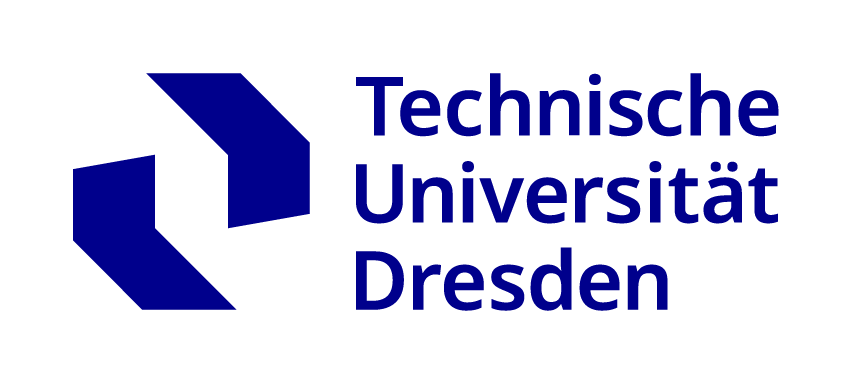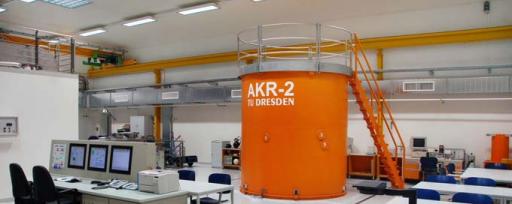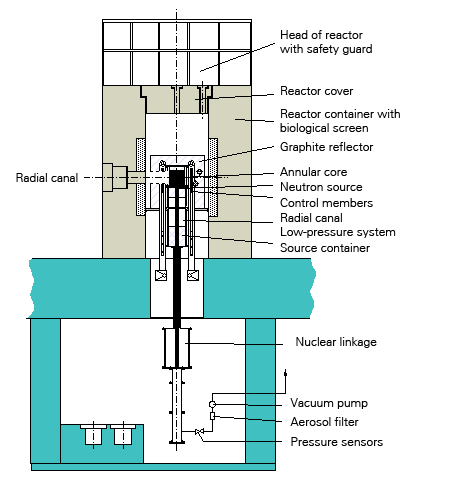AKR-2 Training Power Reactor / Ausbildungs-Kernreaktor AKR-2
Informationen
| Name: | AKR-2 Training Power Reactor / Ausbildungs-Kernreaktor | |
| Modell: | AKR-2 | |
| Einrichtung: | Professur für Wasserstoff- und Kernenergietechnik (WKET) | |
| Partner: | Technische Universität Dresden (TUD) | |
| Standort: | Institut für Energietechnik, George-Bähr-Straße 3b (Walther-Pauer-Bau), 01069 Dresden | |
Beschreibung
Die Reaktoranlage AKR-2 dient vorrangig Lehr- und Ausbildungszwecken. Sie ist aber auch Instrument in Forschungsarbeiten für nationale und internationale Projekte.
Mit der Anlage steht den Nutzern aus Lehre und Forschung der modernste Ausbildungskernreaktor Deutschlands zur Verfügung, der am 22. März 2005 um 19:30 Uhr erstmals kritisch wurde.
Die Studierenden der technischen und naturwissenschaftlichen Disziplinen, aber auch zukünftige Medizinphysik-Experten profitieren dadurch von den verbesserten Ausbildungsbedingungen am AKR-2.
***********English***********
The training reactor AKR-2 (dt. Ausbildungskernreaktor), belonging to the Chair of Hydrogen and Nuclear Technology, is a homogenous solid-state moderated zero power reactor. The reactor became critical for the first time on 29th of July 1978 as AKR-1.
The cylindrical core has a diameter of 250mm, a critical height of 275mm and is composed of disk-shaped nuclear fuel elements. The nuclear fuel elements consist of a homogenous mixture from uraniumdioxid (enrichment <20% U-235) and polyethylene as the moderator material. The cylindrical core contains a total mass of 794 grams U-235.
The maximum continuous power of the reactor is 2 Watts. The facility is controlled by means of three combined control and safety rods made from cadmium. To ensure a safe start of the reactor, an additional and removable neutron source is located inside (Am-Be; source strength 2,2·106 s-1). The cylindrical core is surrounded on all sides by a neutron reflector made of highly pure graphite. The cylindrical reactor vessel, serving as an external encasement, is composed of heavy concrete - 75cm thick - and serves as protection against radiation.
In order to carry out experiments, the AKR contains a central channel, which is a part of the core, as well as five additional experimental channels. At a power of 2 Watts, the flux density of thermal neutrons in the middle of the central experimental channel is 2,5·107cm-2 s-1. Two channels with an inner diameter of 75 mm are arranged tangentially to the cylindrical core inside the graphite reflector.
The reactor is designed, so that if a sudden, supercritical condition arises through maloperation, the reactor will not allow any further operation nor increases in power. This serves to protect the user, the environment and the reactor itself. Furthermore, it serves to ensure that the excess reactivity remains at a maximum of 0.3%; and the release from fission products is avoided through the multifold barrier system.
The reactor’s construction serves mainly as a training and teaching facility, but is also used in research for national and international projects.
Link zu weiteren Informationen
https://tu-dresden.de/ing/maschinenwesen/iet/wket/ausbildungskernreaktor-akr-2
Optionen der Gerätenutzung
- Dieses Gerät wird im Rahmen einer Dienstleistung oder Forschungsleistung (Kooperation) verwendet.
Ansprechpartner
Zugangsvoraussetzungen
For further information and access requirements please visit:
https://tu-dresden.de/ing/maschinenwesen/iet/wket/ausbildungskernreaktor-akr-2/index
Zugeordnete Dienstleistungen
| Name | Vorschau | Aktionen |
|---|---|---|
| Führungen für Schulklassen und Interessierte durch den Bereich des Ausbildungs-Kernreaktor |

|
Bilder
Letztes Update
Zuletzt aktualisiert am: 13. Juli 2017 um 11:54:12

 Alle Geräte dieser Einrichtung anzeigen
Alle Geräte dieser Einrichtung anzeigen 


